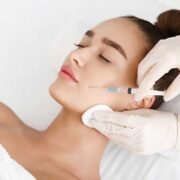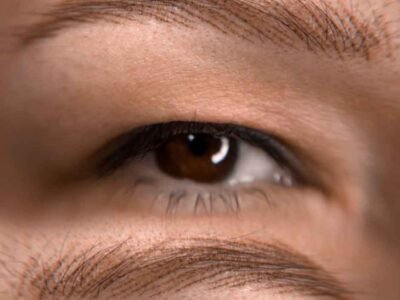Rhinoplasty is one of the most popular cosmetic procedures around the globe.
After all, the nose is the centerpiece of the face. Studies show that the nose has the power to enhance your facial symmetry, making you more attractive as a result.
If you’re interested in rhinoplasty, you may have questions about the recovery process, like “when can I return to work?” Knowing what to expect during each stage of the process will help facilitate a smooth experience.
Keep reading to learn more about rhinoplasty recovery so you can better understand if the procedure is right for you.
The Rhinoplasty Procedure: A Closer Look
To better understand the healing process, let’s look at what happens during the surgical procedure known as rhinoplasty.
Rhinoplasty can be performed under local anesthesia, general anesthesia, or intravenous sedation. It’s important to speak with your doctor and follow their recommendation.
This cosmetic surgery can be performed as a closed or an open procedure and will generally take between one and three hours to perform, depending on which is used.
During a closed procedure, incisions are made within the nose. However, during an open procedure, an incision will be made outside. This is done along the columella, the strip of tissue where the nostrils meet.
Doing so allows the skin to be raised in order to access the underlying bone and tissue. In this step, doctors can structure and reshape the nose based on the patient’s goals.
A nose job for men can involve strengthening the bridge or widening the tip to create more masculine features, whereas women typically seek slender and more angular qualities.
What to Expect From Rhinoplasty Recovery
Every patient is different, and similarly, the healing after each rhinoplasty surgery is unique to each patient. Factors that can influence recovery time include:
- Age
- Bill of health
- Bone structure
- Type of procedure
This timeline is a general overview of what you can expect throughout each stage of healing.
Immediately After Surgery
Immediately following your surgery, you may wake up with nasal splints placed both inside and outside your nose, along with packing gauze, medical tape, and non-dissolvable sutures.
In some cases, a hard cast is also placed over the nose to provide protection and support to the nasal structure while it heals.
You may be groggy as the anesthesia wears off and pain slowly begins to set in. You should be sure to take any prescribed medications to alleviate discomfort.
Common side effects you may experience following a rhinoplasty include:
- Pain
- Swelling
- Bruising
- Bleeding
- Congestion
- Inability to breathe through your nose
During this time, refrain from blowing your nose and wearing makeup to prevent disrupting any healing tissue and possibly infection.
It is also recommended you avoid wearing glasses or anything that may irritate or add extra pressure on your nose that may cause distortion or disfiguration.
Recovery Time: Week 1
You should primarily focus on rest and recovery in the first week, taking the recommended 1 to 2 weeks off from school or work.
During this period, you’ll experience the most discomfort. Be sure to get plenty of rest, lying on your back with your head elevated to allow gravity to drain fluid down and away from your nose.
Within this time, you’ll move from a liquid diet to soft, bland foods as you experience less nausea with the pain medication. You’ll also want to avoid alcohol, coffee, spicy foods, and any food that requires strenuous chewing.
Substantial swelling and bruising are normal within this period, and using a cold pack may help minimize swelling. Because you’ll be breathing solely through your mouth, your throat may also become dry and irritated.
You should refrain from any strenuous activity. While some bleeding from the nose is normal, take note if it becomes excessive and contact your doctor right away.
Recovery Time: Weeks 2 to 3
A moderate amount of swelling and bruising can still be expected in this stage, lessening with each day. Your doctor will have removed any splints, and you should continue taking pain medications as prescribed.
You may resume light activity, including most daily activities, beginning the second week. That includes returning to work, so long as your job doesn’t require strenuous activity.
Recovery Time: Weeks 4 to 6
You may resume exercise during this period, but it’s essential to keep in mind that your nose is still healing, so you should protect it from anything that may hinder this process.
Avoid high contact sports for several months or until you clear it with your doctor, and be sure to wear the proper protective gear. A blow to the nose can significantly delay the healing process.
Though what you see in this stage won’t be the final result, you should have a good idea of what your new nose will look like during this time. Most of the swelling should have subsided, and you may resume wearing glasses.
Final Result
Think of rhinoplasty as a marathon, not a sprint. All bruising should be gone after week six, but a subtle amount of swelling will remain for up to one year following your procedure.
Usually, this is only noticed by the patient or doctor and is not noticeable to those around you. Your nose will slowly begin to change over the coming months until it settles into its final form, typically seen after one year.
Rhinoplasty Recovery Tips
While your body will have its own timeline for recovery, there are steps you can take to ensure you’re assisting the process to the best of your ability.
Following a healthy diet has been closely linked to better healing and recovery. So, be sure to fuel your body with vitamins and nutrients to boost your immune system, stay hydrated, and get plenty of rest.
Avoid smoking cigarettes, as tobacco and nicotine are known to interfere with the healing process and can increase your risk of infection. Additionally, only take medications your doctor has prescribed.
Recover from Rhinoplasty Faster
If you are dissatisfied with the appearance of your nose, rhinoplasty may help improve your self-esteem and quality of life. However, it’s important to follow the self-care tips listed above to ensure a speedy rhinoplasty recovery.
Did you find this article informative? Check out the other great articles on our blog for tips in lifestyle, beauty, fashion, and more!












